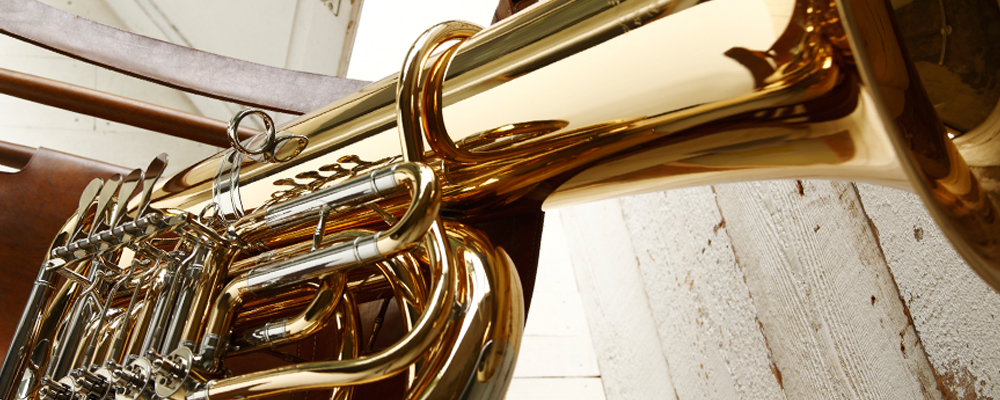The origins of the Tuba
The Birth of the Tuba
The first tuba was made on September 12, 1835
One of the seminal events in the history of brass instruments was the invention of the valve apparatus in the 1820s. After their invention, valves were incorporated into a variety of brass instruments and spurred the creation of one new musical device after another. The basstuba, historical precursor to the modern tuba, made its appearance on September 12, 1835.
The German military bandmaster Wilhelm Wieprecht and the musical instrument inventor Johann Moritz were the basstuba's creators. September 12, 1835 was the date that Moritz filed the patent application for this instrument.
Named after an ancient instrument?
The name "tuba" comes from the Latin word for "tube," but was also used for an ancient bronze instrument used in Greece and Rome. The name was later used as a blanket term for horns, trumpets, and bugles. Moritz called his invention the "basstuba" since it had a lower tone than historical "tubas."
What low-pitched brass instruments existed before the modern tuba?
Before the trumpet and horn were equipped with valves in the 19th century, they were used in simpler forms without valves. However, since the tuba was invented in the 19th century, it had valves from the very beginning.
What type of instruments filled the role of the tuba before it was invented?
Although their structures were entirely different from the tuba, the ophicleide, serpent, and other instruments had a similar function to the modern tube in orchestras. Widely used until the mid-19th century, these used keys (metal caps over the tone holes) like woodwind instruments. For example, Mendelssohn's overture A Midsummer Night's Dream (1826) calls for an ophicleide. Also, when Wagner first wrote his Faust Overture in 1840, he did so with the serpent, not the basstuba, in mind.

The serpent
Musical Instrument Guide:Tuba Contents
Origins
Structure
How to Play
How the Instrument is Made
Choosing an Instrument
Trivia
- A Massive Tuba from 100 Years Ago
- Depending on the Country, a Baritone is Not a Baritone
- The Cinbasso-Popular in Italian Opera
- All Brass Instruments Have Marching Band Models
- Famous Musical Pieces for the Tuba (Bass)
- The Compensating System for the Euphonium
- There are Various Mutes for the Tuba
- Ease of Playing Pedal Tones
- Why Are Tubas So Expensive?
- Do Jazz Musicians Play the Tuba?
- Brass Band Songs Featuring the Tuba
- An Instrument in the Key of B♭, Yet the Music is Written in C

